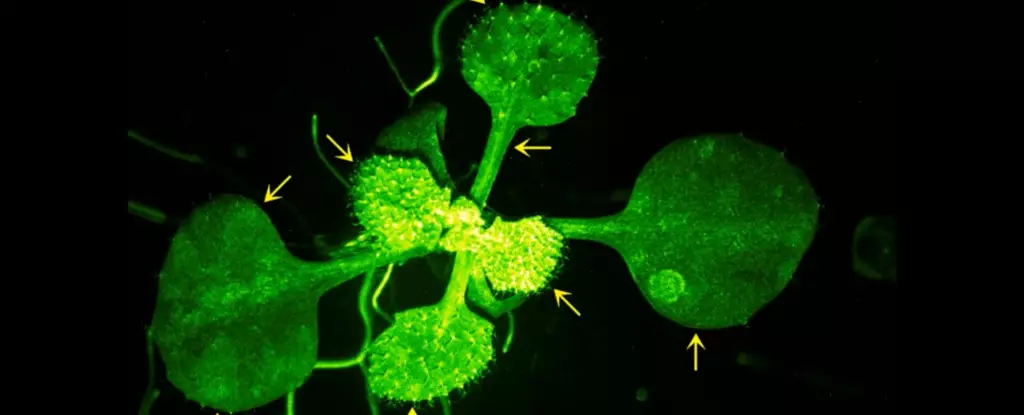Plants have long been known to possess an intricate defense system that helps them communicate and protect themselves from external threats. A recent study by Japanese researchers has shed new light on how plants receive and respond to airborne compounds released by their neighboring plants under distress.
Research Methodology
In the study conducted by Yuri Aratani and Takuya Uemura, molecular biologists at Saitama University in Japan, a pump was used to transfer compounds emitted by injured and insect-riddled plants onto undamaged neighbors. Real-time imaging techniques were then employed to observe the responses of the recipient plants to these danger cues. The researchers focused on Arabidopsis thaliana, a common weed, and tomato plants, genetically modified to fluoresce green in response to an influx of calcium ions.
The findings of the study revealed that two specific compounds, Z-3-HAL and E-2-HAL, induced calcium signaling in Arabidopsis plants. Guard cells, mesophyll cells, and epidermal cells were identified as the primary responders to these danger cues. Guard cells, which are bean-shaped cells on plant surfaces, initiate calcium signals within minutes of exposure to the compounds, followed by mesophyll cells.
Interestingly, pre-treating plants with a phytohormone that shuts stomata, small pores in plant surfaces, significantly reduced calcium signaling. This suggests that guard cells, which regulate the opening and closing of stomata, play a crucial role in plant communication, acting as the ‘nostrils’ of the plant.
The study not only provides valuable insights into how plants communicate and protect themselves but also highlights the complexity of plant signaling mechanisms. Understanding these processes can have significant implications for agriculture, bioengineering, and environmental conservation.
The research conducted by Japanese scientists has uncovered a fascinating aspect of plant communication that was previously unknown. By deciphering how plants receive and respond to airborne compounds, we gain a deeper appreciation for the intricate defense mechanisms that plants employ to survive and thrive in their environment. Further studies in this field could revolutionize our understanding of plant behavior and pave the way for innovative applications in various fields.



Leave a Reply